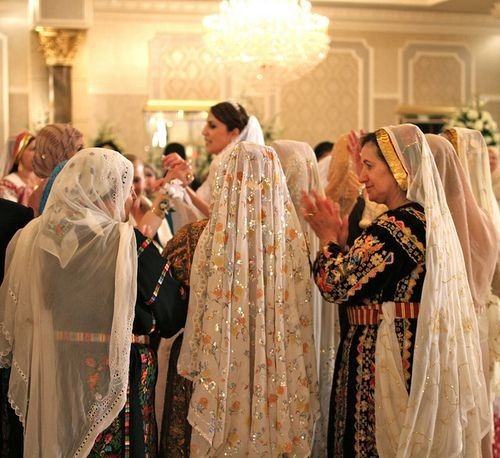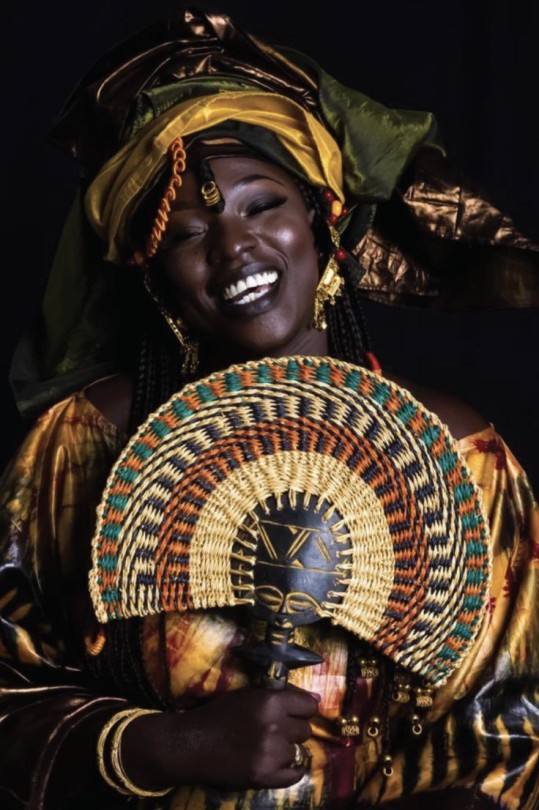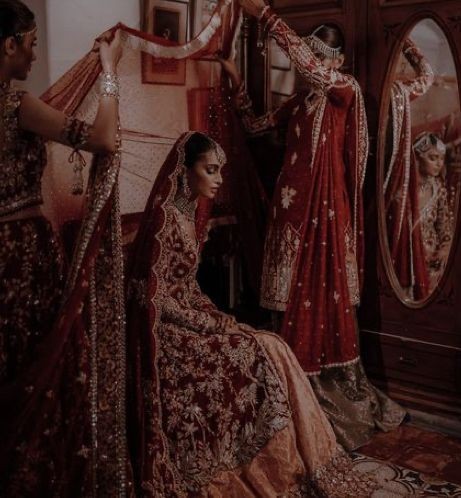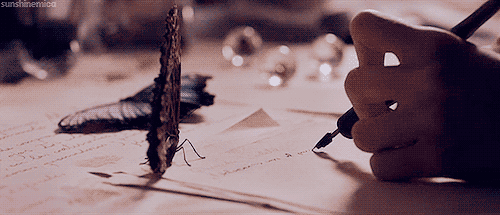Don't wanna be here? Send us removal request.
Text
reminder to worldbuilders: don't get caught up in things that aren't important to the story you're writing, like plot and characters! instead, try to focus on what readers actually care about: detailed plate tectonics
148K notes
·
View notes
Text
How to get to know your characters better?
(feel free to add your own thoughts to this list, hope it helps!) req by @miricalebabyy44 <3
what will your character be like if they were in your shoes?
is your oc the mom friend or the dad or the childish one in their friendgroup ?
do those "poet, king, soldier" quiz for your oc. im being fr
do the "36 questions to fall in love" quiz as your oc.
ik your ocs trauma have an impact on their character, but how would they be like, if they hadn't gone through that experience?
does your oc have similar tastes as you do? (music, art, fashion, coffee/tea etctetc)
will they "i only live once so I'll do it for the plot." or will they "i only live once ffs, i don't wanna die." ?
what is your ocs opinion of love? how is/was their love life on a scale of 1-10?
will your oc let go of someone precious to them when they know they're putting them at danger?
around whom does your oc lets their guard down?
are they romantically constipated or a hopeless romantic?
what type of music does ur oc like?
write a lot about your oc if you're struggling to get to know them. find a drabble prompt, and write what they'd do.
do they trust others easily or do they get trusted by others easily?
what is something your oc will never talk to anyone about? (their answer can be deep, like some emo trauma or like smthng like back when they shit their pants or smthng yk)
do they give off golden retriever energy, or a black cat energy? (or both?)
what will THEIR opinion be on YOUR current life? will they be ur friend? will they trust you?
will your oc survive in a fantasy setting, a war setting, a dystopian setting, a futuristic setting, a medieval setting? will ur oc survive after getting stranded on an island, or a forest?
does your oc like their parents, do they like how their life is, do they feel like they're born in the right gen?
if they are ever to get one wish definitely granted, what would they wish for?
how did they react to their first kiss? (if they have had it by now lmao)
what's an ideal day for your oc?
lastly, who does your oc go to when they've fucked up?
11K notes
·
View notes
Text
Why Writers Don't Finish Writing Their Stories, and How to Fix It
Hello fellow writers and storytellers,
The journey of writing a story is an exhilarating adventure, but it's not without its share of obstacles. Many of us have embarked on a creative endeavor, only to find ourselves mired in the struggle to finish what we started. In this blog post, I'll unravel the common reasons why writers don't finish their stories and explore practical strategies to overcome these hurdles and reignite the flame of creativity.
The Perils of Unfinished Stories
As writers, we often find ourselves in the throes of unfinished tales, grappling with the intricate web of characters, plots, and themes. There are several reasons why the ink dries up and the story remains untold. Let's shine a light on the familiar adversaries that stand between us and the triumphant completion of our narratives:
1. Lack of Planning:
Some of us brazenly dive into our stories without a clear roadmap, resulting in uncertainty about the direction of the plot and the fate of our characters. The lack of a solid plan can lead us astray, leaving our stories wandering in the wilderness of aimlessness.
2. Self-Doubt and Perfectionism:
Ah, the relentless whispers of self-doubt and the siren call of perfectionism! These twin adversaries can cast a shadow over our creative vision, compelling us to endlessly revise and perfect the early chapters, trapping us in a whirlpool of perpetual edits.
3. Time Management:
Balancing the demands of daily life with the ardor of writing can be akin to walking a tightrope. The struggle to find consistent time for our craft often leaves our stories languishing in prolonged periods of inactivity, longing for the touch of our pen.
4. Writer's Block:
The mighty barrier that even the most intrepid writers encounter. Writer's block can be an insurmountable mountain, leaving us stranded in the valleys of creative drought, unable to breathe life into new ideas and narratives.
5. Lack of Motivation:
The flame that once burned brightly can flicker and wane over time, leaving us adrift in the murky waters of disillusionment. The initial excitement for our stories diminishes, making it arduous to stay committed to the crafting process.
6. Fear of Failure or Success:
The twin specters that haunt many writers' dreams. The apprehension of rejection and the unsettling prospect of life-altering success can tether us to the shores of hesitation, preventing us from reaching the shores of completion.
7. Criticism and Feedback Anxiety:
The looming dread of judgment casts a long shadow over our creative endeavors. The mere thought of receiving criticism or feedback, whether from peers or potential readers, can cast a cloud over our storytelling pursuits.
8. Plotting Challenges:
Crafting a cohesive and engaging plot is akin to navigating a labyrinth without a map. Faced with hurdles in connecting story elements, we may find ourselves lost in a maze of plot holes and unresolved threads.
9. Character Development Struggles:
Breathing life into multi-dimensional, relatable characters is a complex art. The intricate process of character development can become a quagmire, ensnaring us in the challenge of creating personas that drive the story forward. (Part one of Character Development Series)
10. Life Events and Distractions:
Unexpected events in our personal lives can cast ripples on our writing routines, interrupting the flow of our creativity and causing a loss of momentum.
Rallying Against the Odds: Strategies for Success
Now that we've confronted the adversaries that threaten to stall our storytelling odysseys, let's arm ourselves with strategies to conquer these barriers and reignite the flames of our creativity.
Embrace the Power of Planning:
A clear roadmap illuminates the path ahead. Arm yourself with outlines, character sketches, and plot maps to pave the way for your story's journey.
Vanquish Self-Doubt with Action:
Silence the voices of doubt with the power of progress. Embrace the imperfect beauty of your early drafts, knowing that every word brings you closer to the finish line.
Mastering the Art of Time:
Carve out sacred writing time in your schedule. Whether it’s ten minutes or two hours, every moment dedicated to your craft is a step forward.
Conquering Writer's Block:
Embrace the freedom of imperfection. Write, even if the words feel like scattered puzzle pieces. The act of writing can unravel the most stubborn knots of writer's block.
Reigniting the Flame of Motivation:
Seek inspiration in the wonders of the world. Reconnect with the heart of your story, rediscovering the passion that set your creative spirit ablaze.
Reshaping Fear into Fuel:
Embrace the uncertainty as an integral part of the creative journey. Embrace the lessons within rejection and prepare for the winds of change that success may bring.
Navigating the Realm of Criticism:
Embrace feedback as a catalyst for growth. Constructive criticism is a powerful ally, shaping your story into a work of art that resonates with readers.
Weaving the Threads of Plot:
Connect the dots with fresh eyes. Step back and survey the tapestry of your plot, seeking innovative solutions to bridge the gaps and untangle the knots.
Breathing Life into Characters:
Engage with your characters as if they were old friends. Dive into their depths, unraveling their quirks, fears, and dreams, and watch as they breathe life into your story.
Navigating Life's Tempests:
Embrace the ebb and flow of life. Every pause in your writing journey is a chance to gather new experiences and perspectives, enriching your storytelling tapestry.
The Ever-Resting Pen: Harnessing the Power Within
Fellow writers, the journey of completing a story is filled with peaks and valleys, each offering us the opportunity to sharpen our resolve and unleash our creative potential. As we stand at the crossroads, staring at the canvas of unfinished tales, let's rally against the odds, armed with the power of purpose, passion, and perseverance.
Let the ink flow once more, breathing life into tales left untold, and watch as your stories triumphantly reach their long-awaited conclusion. You possess the power to conquer the adversaries that stand in your way, and within you lies the essence of untold narratives waiting to unfurl onto the page.
Here's to the journey that lies ahead, the stories waiting to be written, and the unyielding spirit of creativity that thrives within each of us.
Warm regards and unwavering encouragement, Ren T.
3K notes
·
View notes
Text
Types of side characters
1. Foil Characters: These side characters are designed to contrast with the main character, highlighting their qualities or flaws. Foil characters can provide a different perspective and challenge the main character's beliefs or actions.
2. Mentors or Guides: These side characters serve as mentors or guides to the main character, providing wisdom, guidance, and support. They often have more experience or knowledge in a specific area and help the main character navigate challenges or learn important lessons.
3. Comic Relief Characters: These side characters bring humor and levity to the story. They provide comedic relief during intense or serious moments and can help balance the overall tone of the narrative. Their wit, clumsiness, or unique personality traits make them enjoyable and entertaining.
4. Love Interests: Love interests are side characters who are romantically involved with the main character. They add a romantic subplot to the story and can contribute to the main character's personal growth and development. Love interests can be supportive, challenging, or even create conflict within the narrative.
5. Antagonists or Villains: Side characters can also take on the role of antagonists or villains. They oppose the main character's goals and create conflict and tension in the story. Antagonists can have their own motivations, complexities, and backstories, making them more than just one-dimensional obstacles.
6. Friends or Allies: These side characters are the main character's companions, friends, or allies. They provide emotional support, camaraderie, and assistance throughout the story. Friends or allies often share common goals and values, and their relationships can help showcase the main character's growth and strengths.
7. Family Members: Side characters who are family members of the main character can play significant roles in shaping their identity and backstory. They can provide emotional connections, conflict, and a sense of history within the narrative.
8. Background Characters: While not all side characters have to be highly developed, background characters help create a sense of realism and immersion in the story. They populate the world and add depth to the setting, even if they have minimal impact on the main plot.
9. Rivals or Competitors: These side characters compete with the main character, pushing them to improve, overcome obstacles, or achieve their goals. Rivals or competitors can be a source of conflict, motivation, and personal growth for the main character.
10. Witnesses or Observers: These side characters serve as witnesses or observers of the main events in the story. They may provide insights, commentary, or serve as a narrative device to convey information to the reader.
5K notes
·
View notes
Text
Crafting Compelling Villains
1. The "Evil for the Sake of Being Evil" Villain:
This type of villain lacks depth and clear motivations. They simply exist to be wicked and cause chaos without any believable reason or backstory.
2. The One-Dimensional Bully:
This villain is characterized solely by their physical strength or intimidating presence. They lack complexity, depth, and fail to challenge the protagonist on an intellectual or emotional level.
3. The Overpowered and Unbeatable Villain:
This villain is excessively powerful with no apparent weaknesses or vulnerabilities. They pose no real threat to the protagonist, as their defeat seems implausible or impossible.
4. The Expository Villain:
This villain constantly explains their evil plans and motivations without any subtlety or nuance. Their dialogues become monotonous and predictable, diminishing the impact of their character.
5. T The Forgettable Villain:
This villain lacks distinct traits, memorable characteristics, or a unique presence. They fail to leave a lasting impression on readers and are easily overshadowed by other elements of the story
6. The Plot Device Villain:
This villain exists solely to advance the plot without any independent goals or desires. They lack agency and depth, merely serving as a convenient obstacle for the protagonist to overcome.
7. The Unrelatable Monster:
This villain is completely devoid of humanity or relatable qualities. They are monstrous in every sense, lacking any redeeming or understandable characteristics that could engage the audience emotionally.
8. The Placeholder Villain:
This villain is introduced briefly and abruptly, without any significant development or impact on the story. They serve as a mere distraction or temporary obstacle, leaving readers feeling unsatisfied.
9. The Inconsistent Motivations:
This villain's motivations and actions are erratic and inconsistent, making it difficult for readers to understand their choices. Their lack of clear direction undermines the credibility and coherence of their character.
2K notes
·
View notes
Text
Writing Child or Teenage Characters:
Writing child or teenage characters requires an understanding of their unique perspectives, thoughts, and behaviors at various stages of development. Here are some tips to help you capture the essence of child or teenage characters realistically:
1. Research Developmental Stages: Familiarize yourself with the developmental stages of children and teenagers. Understand the physical, cognitive, emotional, and social changes that typically occur during these periods. This knowledge will help you depict characters at appropriate stages of maturity.
2. Voice and Dialogue: Pay attention to the language and vocabulary used by child or teenage characters. Their speech patterns, sentence structure, and word choices may differ from adult characters. Reflect their age and level of education in their dialogue to make it authentic and relatable.
3. Emotional Authenticity: Children and teenagers experience a wide range of emotions, and their emotional responses can be intense and sometimes unpredictable. Show their emotions through their actions, reactions, and internal thoughts. Be mindful of age-appropriate emotional depth and understanding.
4. Observational Perspective: Child and teenage characters often notice and interpret the world differently than adults. Highlight their unique observations, curiosity, and innocence. Allow them to have a fresh perspective that can bring a sense of wonder or discovery to the story.
5. Growth and Development: Portray child or teenage characters as evolving and growing individuals. Show their learning experiences, mistakes, and the lessons they learn along the way. Capture their gradual understanding of the world and their evolving sense of identity.
6. Relationships and Peer Dynamics: Explore the dynamics of friendships, peer pressure, and social hierarchies that are prevalent during childhood and adolescence. Show the influence of friends, family, and mentors on their thoughts and behaviors. Highlight the importance of relationships in their lives.
7. Hobbies and Interests: Reflect the passions, hobbies, and interests that are common among children and teenagers. These activities can shape their identities and provide opportunities for self-expression. Incorporate their hobbies into the narrative to add depth and authenticity.
8. Growth of Independence: As children and teenagers mature, they seek more independence and autonomy. Depict their struggles with authority figures, their desire for freedom, and their exploration of boundaries. Balance their growing independence with their need for guidance and support.
9. Challenges and Coming of Age: Explore the challenges and rites of passage that child and teenage characters face. Address issues such as identity formation, peer pressure, academic stress, bullying, first love, and self-discovery. Treat these themes with sensitivity and avoid trivializing or dismissing their experiences.
10. Evolving Relationships with Adults: Capture the evolving relationships between child or teenage characters and the adults in their lives. Show the shifting dynamics, conflicts, and moments of connection. Avoid portraying adults as one-dimensional authority figures or overly understanding mentors.
2K notes
·
View notes
Text
Strategies for creating conflicts between the protagonist and the antagonist that drive the story forward.
Creating conflicts between the protagonist and the antagonist is vital for driving the story forward and engaging readers. Here are some strategies to help you craft compelling conflicts:
1. Goals and Motivations: Establish clear and conflicting goals and motivations for both the protagonist and antagonist. Make sure their objectives are mutually exclusive or directly opposed to each other, creating inherent conflict.
2. Personal Stakes: Make the conflict personal for both the protagonist and antagonist. Connect their goals to their personal desires, values, or relationships. When something deeply important is at stake, the conflict becomes more intense and emotionally charged.
3. Ideological Differences: Explore ideological differences between the protagonist and antagonist. Present opposing beliefs, philosophies, or worldviews that clash throughout the story. This can lead to profound debates and arguments, driving the conflict forward.
4. Obstacles and Challenges: Introduce obstacles and challenges that stand in the way of both the protagonist and antagonist achieving their goals. These obstacles can be physical, emotional, or psychological, forcing them to confront each other in a series of conflicts.
5. Strategies and Tactics: Allow the protagonist and antagonist to employ different strategies and tactics in pursuit of their goals. Show how their contrasting approaches intensify the conflict and force them to outwit each other.
6. Reversals and Setbacks: Incorporate reversals and setbacks for both the protagonist and antagonist. Just when one gains an advantage, have the other seize an unexpected opportunity or achieve a significant breakthrough. This keeps the conflict dynamic and unpredictable.
7. Emotional Confrontations: Create moments of emotional confrontation between the protagonist and antagonist. Explore their personal histories, traumas, or vulnerabilities, and bring them to the surface during pivotal confrontations. This adds depth to the conflict and raises the emotional stakes.
8. Physical Confrontations: Include intense physical confrontations between the protagonist and antagonist. These can be action sequences, battles, or confrontations that test their strength, skills, and determination. Use these moments to escalate the conflict and heighten tension.
9. Psychological Warfare: Incorporate psychological warfare between the protagonist and antagonist. Show how they manipulate, deceive, or psychologically torment each other to gain the upper hand. This adds layers to the conflict and tests their mental fortitude.
10. Moral Dilemmas: Present moral dilemmas that force the protagonist to make difficult choices and challenge their values. Allow the antagonist to exploit these dilemmas, further fueling the conflict and testing the protagonist's resolve.
2K notes
·
View notes
Text
I've been writing for a while so I thought I'd share some writing tips I've learned along the way.
1. Never sacrifice the flow for a quirky line.
That bit of dialogue or flowery paragraph you really like but it kinda disrupts the flow? Scrap it. I know it hurts, but you need to. If you really want to keep it, find somewhere else to put it where it actually fits in.
2. Dialogue is a dance.
Dialogue should go at the pace of an actual conversation, back and forth with little breaks and pauses. Add as little dialogue tags as possible while still making it clear who is speaking. You can also describe what is happening during a pause in the conversation rather than saying they paused, unless the pause is important.
3. Show don't tell is a guideline, not a rule.
Show don't tell is a very useful guideline, but if you're ALWAYS showing it can get exhausting to read. Skip the boring bits and just tell us what happened, then we can get to the good stuff.
4. If it's boring to write, it's probably boring to read.
If you can cut out a whole scene with little consequence to the story, you probably should. As I said before, you don't always have to show us, you can always tell us.
5. Everything needs to have a purpose.
I know there are probably lots of interesting or cute scenes where your characters are just fucking around, but if it doesn't develop character, relations, conflict, or plot, why should we care? Definitely still write them if they make you happy, but if you're gonna add it to your final draft, make sure it matters.
6. You don't need to explain everything all at once.
I know it feels tempting to put all the lore, and all the character's intentions, and reasonings into the first few chapters, but please refrain, you can reserve that for your character and worldbuilding sheets. Instead, take the time to let us get to know the characters, and the world, in the same way we'd get to know a real person. Make your exposition as seamless and natural as possible. It will take practice to know when to reveal information and when to let us wonder, but you'll get there.
7. Write in a way that comes naturally.
I know you probably have an author you wanna write just like, but that is unlikely to happen. Embrace your natural writing style and perfect it, rather than trying to be something you're not. Writing is an art, you need to find your own style and polish it as best you can.
8. Try to make us feel connected by cutting out certain words like "felt".
"Chad felt like a glass of water." Can be replaced with, "Chad was thirsty, so he reached for a glass of water." Both sentences tell us Chad wants a glass of water, but one makes us feel more connected to Chad than the other. Though both sentences have their time and place, you want to make your audience feel as close to their protagonist as possible. Make them feel like they're there, rather than just an onlooker.
9. We don't need to know every physical detail of your character.
I know you probably spent ages creating the perfect characters and you want to give us the perfect image of what they look like, but it can get monotonous and boring, why do we care that your character has brown eyes unless the colour has some sort of significance? Try to list off only the most notable features of your character and put focus only on the relevant details. Sometimes you can even not describe them at all and throw in little bits of information about their appearance for the audience to put together. We read to imagine, not to have a perfect image painted for us when we could be getting to the plot.
10. You're allowed to be vague.
Allow your audience to assume things, with some things you can just be lazy and let your audience's imagination do the work for you. Of course, don't do this with important things, but you can save so much time you might've spent researching an irrelevant topic when you can just be vague about it. You don't have to know everything you're writing about, so long as you know the bits that matter.
11. Writing is a skill that takes practice.
Don't be so hard on yourself if your writing is a bit cringe, we've all been there. The important part is that you research how to get better and keep writing those super cringe chapters. One day you'll reread something from a while ago and realize you're actually not as bad as you thought.
12. Leave your work to rest.
I know you wanna start editing right away, but once you've finished, leave it for at least a month. The longer you leave it the better, but that depends on your attention span. A month to six months is good if you're really impatient but want a good result. If you keep writing in that time your skills will continue to improve, then you'll be editing that draft with fresh eyes and fresh skills.
And if you're a fanfic author, I usually leave my chapters for a week before editing and posting.
Hope this helps anyone struggling, I thought this might be especially relevant now with nanowrimo.
I recently realized how much knowledge I've been accumulating over the years, I definitely have more but this is all I can think of for now.
I'm no writing guru, but if anyone has anything they're struggling with, I can do my best to help you out, so dont hesitate to ask questions.
3K notes
·
View notes
Note
I don't know if you've done this before but what are some good ways to describe speech?
Ways to Describe Speech
-> feel free to edit and adjust pronouns as you see fit.
His voice was deep like the rumbling of the earth.
She had the voice of a singer, smooth and rich like chocolate.
Their voice reminded him of spring rain.
He often paused in his speaking, like a car radio that had lost signal.
She had a lilt to her voice that made it seem like she was asking a question.
Their voice was monotonous, threatening to put her to sleep with every word.
He couldn't put her voice into words. It was... otherworldly.
Her voice was brittle, as if she were on the verge of tears.
Their voice was authoritative. Their words carried like a loud command.
His voice, unapologetic and unwavering, made her shrink back.
Her voice was barely above a whisper.
Their words were cold with anger.
Other Words to Use to Describe Voice:
Firm
Formal
Frank
Hesitant
Humorous
Passionate
Playful
Professional
Respectful
Serious
Sympathetic
Smug
Superior
Croaky
Dry
Forceful
Grating
Hateful
Insincere
Nasally
Snarky
Tuneless
Wavering
Breaking
Coarse
Flat
Hoarse
High Pitched
Husky
Mellow
Raspy
Rough
Scratchy
Strong
Trembling
Boisterous
Booming
Screeching
Faint
Feeble
Frail
Penetrating
Piercing
Quiet
Raised
Shrill
Soft
Weak
Whisper
Captivating
Deep
Feathery
Hypnotic
Lilting
Mesmerizing
Rich
Smoky
Soothing
Breathy
Delicate
Warbling
7K notes
·
View notes
Text
Fantasy Guide to Building A Culture

Culture is defined by a collection of morals, ethics, traditions, customs and behaviours shared by a group of people.
Hierarchy and Social Structures

Within every culture, there is a hierarchy. Hierarchies are an important part of any culture, usually do ingrained that one within the culture wouldn't even question it. Hierarchy can be established either by age, gender or wealth and could even determine roles within their society. Sometimes hierarchy can may be oppressive and rigid whilst other times, ranks can intermingle without trouble. You should consider how these different ranks interact with one another and whether there are any special gestures or acts of deference one must pay to those higher than them. For example, the Khasi people of Meghalaya (Northern India), are strictly matriarchal. Women run the households, inheritance runs through the female line, and the men of the culture typically defer to their mothers and wives. Here are a few questions to consider:
How is a leader determined within the culture as a whole and the family unit?
Is the culture matriarchal? Patriarchal? Or does gender even matter?
How would one recognise the different ranks?
How would one act around somebody higher ranking? How would somebody he expected to act around somebody lower ranking?
Can one move socially? If not, why? If so, how?
Traditions and Customs

Traditions are a staple in any culture. These can be gestures or living life a certain way or to the way a certain person should look. Traditions are a personal detail to culture, they are what make it important. Tradition can dictate how one should keep their home, run their family, take care of their appearance, act in public and even determine relationship. Tradition can also be a double edged sword. Traditions can also be restrictive and allow a culture to push away a former member if they do not adhere to them, eg Traditional expectations of chastity led to thousands of Irish women being imprisoned at the Magdelene Laundries. Customs could be anything from how one treats another, to how they greet someone.
How important is tradition?
What are some rituals your culture undertakes?
What are some traditional values in your world? Does it effect daily life?
Are there any traditions that determine one's status?
Values and Opinions

Values and Opinions are the bread and butter of any culture. This is the way your culture sees the world and how they approach different life hurdles. These may differ with other cultures and be considered odd to outsiders, what one culture may value another may not and what opinion another holds, one may not. There will be historical and traditional reasons to why these values and opinions are held. Cultures usually have a paragon to which they hold their members to, a list of characteristics that they expect one to if not adhere to then aspire to. The Yoruba people value honesty, hard work, courage and integrity. Here are some questions to consider?
How important are these ethics and core values? Could somebody be ostracised for not living up to them?
What are some morals that clash with other cultures?
What does your culture precieved to be right? Or wrong?
What are some opinions that are considered to be taboo in your culture? Why?
Dress Code

For many cultures, the way somebody dresses can be important. History and ethics can effect how one is meant to be dressed such as an expectation of chastity, can impose strict modesty. While other cultures, put more importance on details, the different sorts of clothes worn and when or what colour one might wear. The Palestinian people (من النهر إلى البحر ، قد يكونون أحرارا) denoted different family ties, marriage status and wealth by the embroidery and detailing on their thoub.
Are there traditional clothes for your world? Are they something somebody wears on a daily basis or just on occasion?
Are there any rules around what people can wear?
What would be considered formal dress? Casual dress?
What would happen if somebody wore the wrong clothes to an event?
Language

Language can also be ingrained as part of a Culture. It can be a specific way one speaks or a an entirely different language. For example, in the Southern States of America, one can engage in a sort of double talk, saying something that sounds sweet whilst delivering something pointed. Bless their heart. I have a post on creating your own language here.
Arts, Music and Craft

Many cultures are known for different styles of dance, their artwork and crafts. Art is a great part of culture, a way for people to express themselves and their culture in art form. Dance can be an integral part of culture, such as céilí dance in Ireland or the Polka in the Czech Republic. Handicrafts could also be important in culture, such as knitting in Scottish culture and Hebron glass in Palestine. Music is also close to culture, from traditional kinds of singing such as the White Voice in Ukraine and the playing of certain instruments such as the mvet.
Food and Diet

The way a culture prepares or intakes or treats certain foods are important to a culture. In some cultures, there is a diet yo adhere to, certain foods are completely banned. With Jewish culture, pork is prohibited along with fish such as sturgeon, along with shellfish and certain fowl. Meat must also be prepared in a certain way and animal byproducts such as dairy, must never be created or even eaten around this meat. This is known as kosher. The way one consumes food is also important to culture. In some cultures, only certain people may eat together. Some cultures place important on how food is eaten. In Nigerian culture, the oldest guests are served first usually the men before the women. In Japanese culture, one must say 'itadakimasu' (I recieve) before eating. Culture may also include fasting, periods of time one doesn't intake food for a specific reason.
What are some traditional dishes in your world?
What would be a basic diet for the common man?
What's considered a delicacy?
Is there a societal difference in diet? What are the factors that effect diet between classes?
Is there any influence from other cuisines? If not, why not? If so, to what extent?
What would a typical breakfast contain?
What meals are served during the day?
What's considered a comfort food or drink?
Are there any restrictions on who can eat what or when?
Are there any banned foods?
What stance does your world take on alcohol? Is it legal? Can anybody consume it?
Are there any dining customs? Are traditions?
Is there a difference in formal meals or casual meals? If so, what's involved?
Are there any gestures or actions unacceptable at the dinner table?
How are guests treated at meals? If they are given deference, how so?
11K notes
·
View notes
Note
enemies to lovers where they really hate eachother but somehow their words have a tint of flirt in it and I'm struggling to find them🙏🙏
Flirty Threats
-> feel free to edit and adjust pronouns as you see fit.
"Are you laughing at me?" "Yeah, I am. What are you going to do about it?"
"Wipe that smile off your face before I do it for you."
"And you think you can get away with threatening me?"
"What made you think you can talk to me like that?"
"Are you still thinking about me? Is that why you're so unfocused?" "You wish."
"You really think you have that much of an impact in my life?"
"Do as I say."
"Oh, you think you're hot stuff?"
"Take a shower, [last name], I can smell you from here." "Care to join me?" "In your dreams."
"I don't think you realize how angry you make me." "Aw, I have that much of an effect on you?"
"Wow, Love. You've really outdone yourself this time."
"Trying out a new nickname, are we?"
6K notes
·
View notes
Text
some rather basic tips to writing
Start with an idea: The first step in creating a good storyline is to come up with an idea. This can be anything from a character, a setting, or a plot point that you find interesting.
Develop your characters: Once you have an idea, it's time to start developing your characters. Think about their personalities, motivations, and backstories. This will help you create characters that are relatable and interesting to your readers.
Create a plot: With your characters in mind, it's time to start creating a plot. Think about what your characters want, what obstacles they will face, and how they will overcome them. This will help you create a compelling story that will keep your readers engaged.
Use descriptive language: When writing your story, use descriptive language to help your readers visualize the setting and characters. This will help them become more invested in the story and feel like they are a part of it.
Show, don't tell: Instead of telling your readers what is happening, show them through actions and dialogue. This will help your readers become more engaged in the story and feel like they are experiencing it firsthand.
Use dialogue effectively: Dialogue is an important part of any story, as it helps to reveal character traits and move the plot forward. Use dialogue effectively by making it sound natural and realistic.
Edit and revise: Once you have finished your first draft, it's time to edit and revise. Look for areas where you can improve the story, such as plot holes or weak character development. This will help you create a polished final product that your readers will enjoy.
By following these steps, you can create a good storyline and use effective writing techniques to engage your readers and keep them invested in your story.
972 notes
·
View notes
Text
how to write a likeable grumpy character
consistency : this is applicable to all your characters but becomes specifically important while writing one that might not appeal to the audience because of certain traits. you should know when to balance out their grumpiness to other behaviours– being a grinch cannot make up their entire personality!
body language : their irritability can be expressed not just through dialogues and expressions, body language plays an important role as well. a descriptive narration of acts such as crossed arms, huffs, a perpetual scowl or the good old eye-roll could create a similar effect without annoying and the reader as much.
internal thoughts and beliefs : it is very often noticed how a grumpy character's inner ideals are on a comparatively 'softer' and vulnerable side, which allows room for the reader to sympathize with them. maybe this side could be shown to a particular character while it remains hidden to others. if you're thinking about luke and lorelai, congratulations because so am i.
humor : their grumpy behaviour can always be used to provide hilarity in otherwise tense scenarios. give them some witty comebacks, a fair amount of sarcasm or some self-deprecating humor and watch the audience fall in love with them.
contrast : establish scenes that provide a contrast between their gruff nature and hidden benevolent traits. interactions with characters that they feel safe around, acts of kindness and a demonstration of their protective instincts shows a caring side behind the grumpy facade.
reasons : although this isn't necessary, it can be used according to your will and pleasure. find a (realistic) reason behind your character's irritable behaviour– maybe certain events trigger it more often, a backstory, out of spite from certain other characters, personal struggles etc.
self-awareness : allow them to be conscious of their actions and behaviour, maybe even learn from them. their willingness to do better (or at least attempting to) creates a sense of liking for the audience. this awareness along with their internal struggles as mentioned earlier would add layers to their personality and thus help in character growth.
4K notes
·
View notes
Text
Flaws to Add to Characters
So, are you searching on how to make your character a little bit less perfect without giving them too many extreme deficiencies? Well, I have a few examples, and some of you guys might've not even realized that they're flaws!
Inability to get over the past - This doesn't have to be as serious as people think! Maybe the past just influenced your character in a way that affects his modern life!
Self-reliance - This doesn't sound like a flaw, doesn't it? Well, in some cases, it could be an issue a character struggles to overcome, and other times, it can actually be a part of a character's development! However, the act of never accepting help from someone is most definitely a shortcoming.
Apathy - I think that this is pretty self-explanatory. Over-passionate people are dangerous, but worse than that are people who don't care enough.
Over-passionate - It's still a flaw, guys! Having too much passion for one thing to the point where nothing else matters is harmful to your character.
Vengeful - This is also rather clear, I don't think I need to further explain this.
Detached - Almost like self-reliance, but to a more severe degree, where they don't see the need for not only anyone's help, but for anyone in general.
Possessiveness - If a character is too possessive towards another character, it could harm the latter's mental health and ruin any relationship between the two.
Manipulative - I hope that no one needs me to explain this!
Self-destructive - Honestly, this has a pretty wide range of examples, it could go from neglecting oneself to actual self-harm. Either way, it's definitely not healthy for a character.
Superiority/God complex - The problem is in the name: a character with these complexes simply believes that they are better than everyone else. It's similar to arrogance, but not quite the same.
Here you go! Ten flaws that you can incorporate in your characters!
Happy writing~
3hks ^^
3K notes
·
View notes
Text
What should Happen next in your Story? #Writersblock
1. Review Your Story Goals: Take a step back and remind yourself of your story's overall goals, themes, and the character arcs you've established. What message or emotions are you trying to convey? Reconnecting with your story's core can provide direction.
2. Character Development: Consider your characters' motivations, desires, and conflicts. Think about how their actions and decisions can further their development and the overall plot.
3. Conflict and Obstacles: Introduce new conflicts or obstacles that challenge your characters and move the story forward. Conflict is often a driving force in storytelling.
4. Foreshadowing: Look at earlier parts of your story for elements that can be developed or paid off in the next part. Foreshadowing can create anticipation and coherence in your narrative.
5. Brainstorm Ideas: Take a few minutes to brainstorm potential plot developments or scenarios, even if they seem far-fetched. Sometimes, these ideas can lead to more refined plot points.
6. Seek Inspiration: Read books, watch movies, or explore other art forms that inspire you. Inspiration often comes from exposure to different creative works.
7. Write Freely: Give yourself permission to write without judgment. You can always revise later. Sometimes, just getting words on the page can help you discover where your story is going.
8. Talk to Someone: Discuss your story with a friend, writing partner, or critique group. They may offer insights or ideas you haven't considered.
9. Change Perspective: Consider writing a scene from a different character's perspective or in a different setting. This can help you explore new angles and generate ideas.
10. Take a Break: Sometimes, a brief break from writing can provide clarity and fresh ideas. Go for a walk, engage in a different creative activity, or relax to clear your mind.
11. Read Writing Prompts: Look for writing prompts or exercises related to your genre or theme. These can spark new ideas and get your creative juices flowing.
12. Set a Deadline: Establish a reasonable deadline for yourself, even if it's self-imposed. The pressure of a deadline can help you focus and generate ideas.
13. Revisit Your Outline: If you have an outline, revisit it to see if you missed any planned plot points or if there are opportunities to add more depth.
1K notes
·
View notes
Text
Dark past ideas
A dark past can be really intresting in books .here are some ideas:
Mysterious Orphanage Escapee: A character who grew up in a sinister orphanage and narrowly escaped its dark secrets.
Traumatic War Survivor: A soldier who witnessed unspeakable horrors on the battlefield, leaving deep emotional scars.
Secret Criminal Past: A reformed criminal who once led a life of violence, but is now trying to make amends.
Kidnapped as a Child: A character who was abducted at a young age and endured years of captivity before escaping.
Tragic Family Betrayal: A character who was betrayed by a close family member, leading to a life filled with distrust and pain.
Cult Escapee: Someone who managed to break free from a dangerous cult, but is haunted by their past involvement.
Haunted by a Violent Crime: A person who accidentally caused harm to someone in their past and has been tormented by guilt ever since.
Dark Addiction: A character who battled a severe addiction that nearly destroyed their life before seeking recovery.
Betrayed by a Friend: A friend who turned out to be a traitor, leading to significant emotional trauma.
Abandoned in Isolation: Someone who was left alone and abandoned in a desolate place, struggling to survive.
Witness to a Murder: A character who saw a murder as a child and was forever scarred by the experience.
Childhood Experimentation: A person who was subjected to unethical scientific experiments in their youth, leaving lasting physical and emotional scars.
Kidnapped and Forced into Crime: A character who was abducted and forced to commit criminal acts against their will.
Betrayed by a Mentor: Someone who was betrayed by a trusted mentor, leading to a deep sense of betrayal and loss.
Survived Natural Disaster: A survivor of a catastrophic natural disaster who lost everything they held dear.
Abusive Relationship Escapee: A person who managed to escape an abusive relationship, but continues to struggle with the trauma.
Witness to a Dark Ritual: A character who stumbled upon a sinister occult ritual in their past, leaving them haunted by the experience.
Family Curse: A character burdened by a dark family curse that has brought suffering to generations.
Identity Theft and Framing: A person who had their identity stolen and was wrongfully accused of crimes they didn't commit.

6K notes
·
View notes
Text
Three tricks to avoid plot armour
Plot armour can be difficult to avoid. We get so attached to our characters that hurting them in any way feels like a betrayal.
But plot armour is detrimental to any good narrative. Having your characters avoid harm, whether that be emotional or physical, means that there aren't any stakes. And without stakes, it's difficult for readers to invest.
There are three simple things you can use to avoid plot armour:
🔵 Injury 🔵 Sacrifice 🔵 Consequence
In every conflict, make sure the resolution contains at least one of these things.
If you don't want to injure your characters, make sure that they sacrifice something, whether that be someone, or an object. If they don't sacrifice anything, make sure there is a consequence. That consequence can be a loss, an emotional wound, or simply a blow to their reputation. The important thing is that your character doesn't remain unscathed by their experience, and they walk out somehow changed.
2K notes
·
View notes